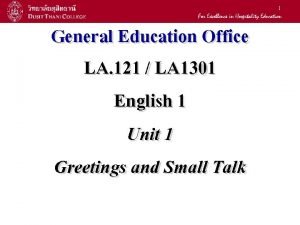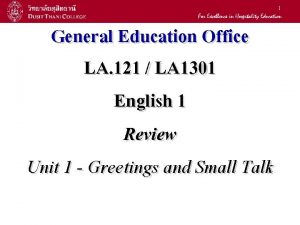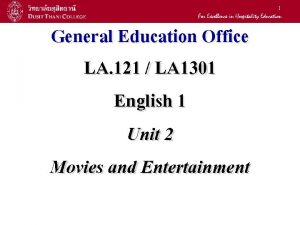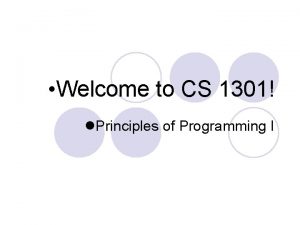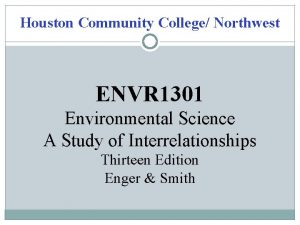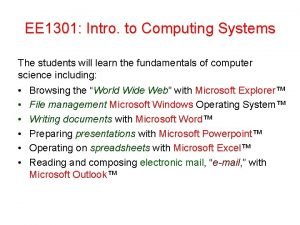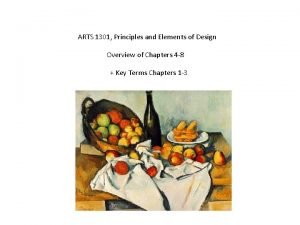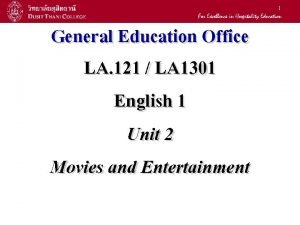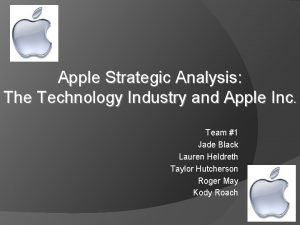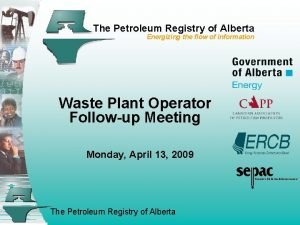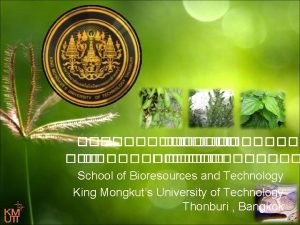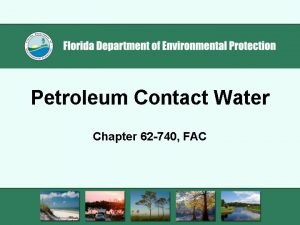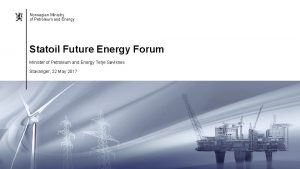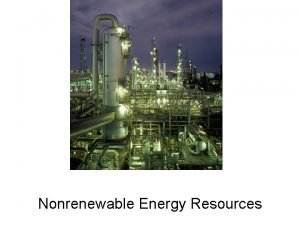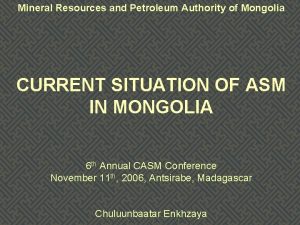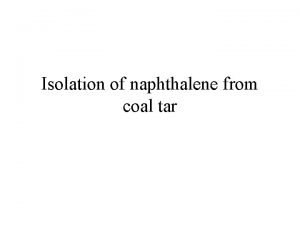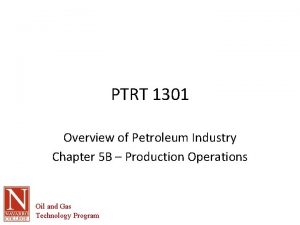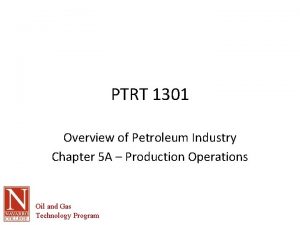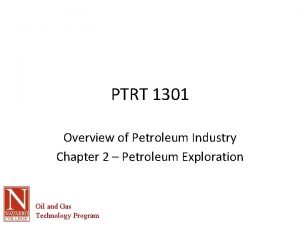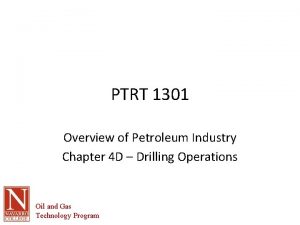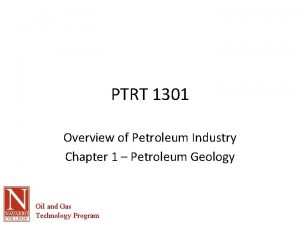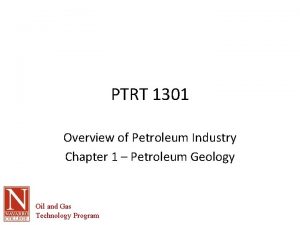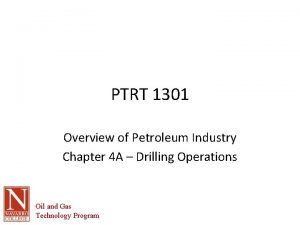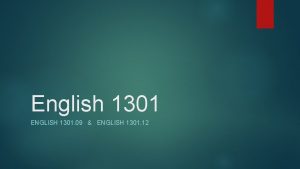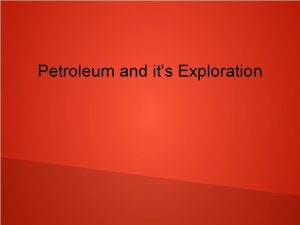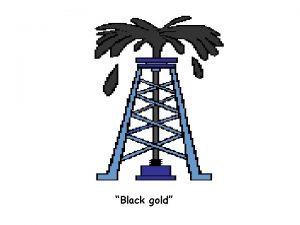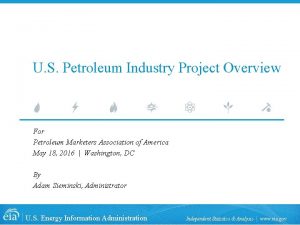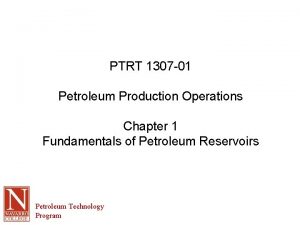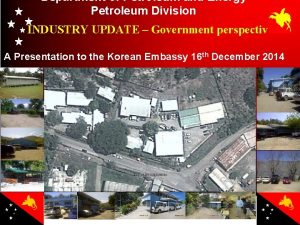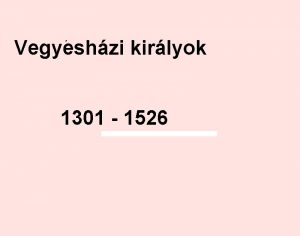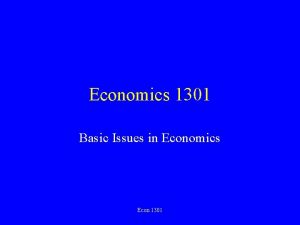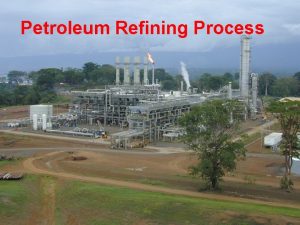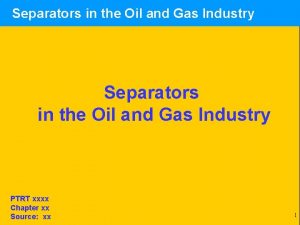PTRT 1301 Overview of Petroleum Industry Chapter 4



















- Slides: 19

PTRT 1301 Overview of Petroleum Industry Chapter 4 B – Drilling Operations Oil and Gas Technology Program

Rotating system • Main motive force – rotary table (unless top drive in use) – generates torque • Rotating equipment starts with the swivel • Swivel does not rotate, but allows everything beneath it to rotate – – Kelly drill string drill collars Drill bit • Top drive eliminates much of this system Oil and Gas Technology Program

Oil and Gas Technology Program

Rotary table • Master bushing - Transfers drive power (torque) to kelly bushing • Kelly bushing - Transfers torque to kelly • Slips engage the drill pipe when kelly is removed – Teeth-like gripping elements called Dies – The dies grip the drill pipe to prevent slippage when kelly is disconnected Oil and Gas Technology Program

Kelly • Square or hexagonal Why? – Round relies only on friction to cause rotation – Flat surface allows strength of steel to support the rotation. – Think of using pliers to remove a broken bolt vs wrench on the head. Oil and Gas Technology Program

Top drive • On large rigs conventional swivel is replaced with a powered swivel. • Replaces kelly bushing & master bushing • Rotary table retained for slips to engage • Advantage – Safer and more efficient • Disadvantage – $$ Oil and Gas Technology Program

Slips and Connections New section of drill pipe being installed Slips support drill string while disconnected from kelly Oil and Gas Technology Program

Drill pipe & collars • Most are steel tubes. – Sections (joints) ~ 30’ long – 4 ½” drill pipe 16. 6 lbs/foot – 30’ length weighs 498 lbs • Drill collars – – extra weight on the bit larger diameter & thicker 7” diameter 125 lbs/foot 30’ length = 3750 lbs • Sections are assembled with threaded “tool joints” – Short section of threaded tube welded to the end – allows for threads. Oil and Gas Technology Program

Oil and Gas Technology Program

Roller Cone Bits • • 3 ¾” ----26” diameter Most common 17 ½” , 12 ¼”, 7 7/8”, 6 ¼” Roller cone bits roller bearings – Sealed-keep mud out, & protects from other abrasions – Unsealed—drilling mud lubricates • Journal bearings – Sealed • Most roller cone bits are jet bits driller fluid exits through small nozzles between the cones. • These jets of fluid sweep cuttings up & out of the hole. Oil and Gas Technology Program

Diamond Bits • Diamond Bits – Fixed head of natural or industrial diamonds embedded in the surface – Diamond-coated Tungsten Carbide • Not compatible with highs T • Single outlet for fluid & channels to direct the flow along the rows of diamonds for cooling. • Hybrid bits – combination Oil and Gas Technology Program

Oil and Gas Technology Program

Circulating System • Conditions and supplies drilling fluid (drilling mud) to the drill bit. (fig. 4. 34) • Mud pump – Into Stand pipe into rotary hose • Pressure & flow rate provided by mud pump. • Rotary hose is flexible to allow vertical motion. Does not rotate. • Mud returns with cuttings via the annulus and out through mud return line. • Cuttings removed via shale shaker go to reserve pit. • Mostly a disposal area but can be used to allow suspended solids to settle out. • If settling doesn’t work you can add equipment to clean the mud – Desander – Degasser – Desilter Oil and Gas Technology Program

Drilling Mud • Water, clay, other minerals – Removes cuttings – Cools and lubricates the bit – Exerts pressure inside the hole – Create wall cake that stabilizes the surface (fig. 4. 39) • Properties of mud – Viscosity (support solids) – Weight (density) (pressure control) – Filtration rate (water loss) – Solids content (degrades bit performance) Oil and Gas Technology Program

Oil and Gas Technology Program

Oil and Gas Technology Program

Power System • “Prime movers” – – Internal combustion engines 2 or more 1000 -3000 hp. Diesel engines 500 -1000 hp. Circulation & hoisting 100 -500 hp auxiliary &lighting • Power transmission – Electric drive- generators • Cables transfer power to electric motor to power all other equipment • Versatile since extra power can be supplied simply via control & switches – Mechanical drive • Belts, pulley's, & chain drive are used to transfer power from engines to various systems. Oil and Gas Technology Program

Oil and Gas Technology Program

Review En. Cana Rig Tour Photos Oil and Gas Technology Program
 La 1301
La 1301 La 1301
La 1301 La 1301
La 1301 Cs 1301
Cs 1301 Envr 1301
Envr 1301 Ee 1301
Ee 1301 Arts 1301
Arts 1301 La 1301
La 1301 Industry analysis of apple
Industry analysis of apple Why consulting
Why consulting Telecom industry overview
Telecom industry overview Petroleum registry
Petroleum registry Petroleum ether composition
Petroleum ether composition Petroleum contact water
Petroleum contact water Alkane cracking
Alkane cracking Petroleum facts
Petroleum facts Statoil
Statoil Advantages and disadvantages of nonrenewable energy
Advantages and disadvantages of nonrenewable energy Mineral resources and petroleum authority of mongolia
Mineral resources and petroleum authority of mongolia Derivatives of naphthalene slideshare
Derivatives of naphthalene slideshare
